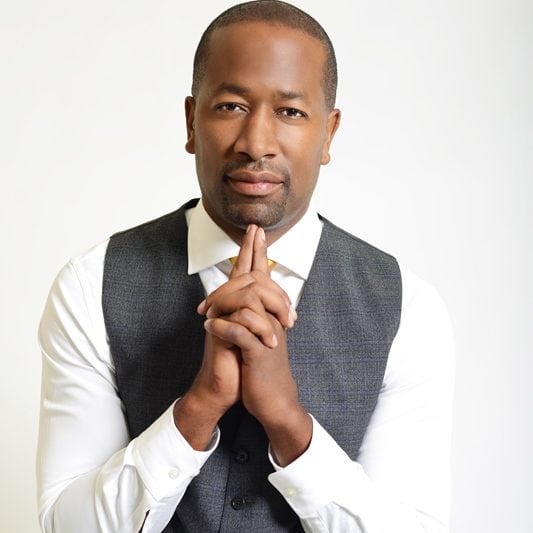Winter is in full swing, and there is no better time to focus on your health and do a little cleansing. Starting the new year right by detoxifying your body and getting rid of that lethargic winter weight we all seem to put on during the holiday season. Cleansing with a system like Dherbs is a fantastic way to recharge and rejuvenate the body, providing extra motivation for your new year’s resolutions. Everyone can make the most of this time of year by waking up the body from what feels like hibernation. A cleanse can kick start your journey toward a healthier, more active lifestyle.Right after all the holiday feasts is the perfect time of year to clean out your system and start fresh. From fasting to cleansing and everything in between – natural remedies have become an increasingly popular way to ring in the new year.
There’s a big difference between fasting and cleansing, and the effects on the body are very different. Fasting has deep historical roots inmost of the major religions of the world. Well known examples of fasting periods in various religions include Lent, Ramadan, and Yom Kippur. Famous figures like Plato, Socrates, Gandhi, and even Jesus used to fast to promote spiritual calm, mindfulness, and clarity. Even today, it is widely understood that fasting, for many, is an important component of a spiritual life. For the ancient Chinese and many other cultures, fasting has long been used in tandem with herbal medicine to shed the extra layer of fat gained during the long cold winters as a way to keep warm.

While a fast is traditionally used for religious, spiritual and weight loss purposes, cleanses focus on removing harmful toxins from the body to promote optimal health and help the body fight off illness. Herbal cleanses, such as Dherbs cleanses, take their cue from ancient medicine and are steadily gaining popularity in the west. ; they follow many of the ancient herbal traditions that have been used for centuries in the east and have only recently begun to be applied among western health regiments.
Ancient Medicine
The history of modern medicine itself is rooted in herbal medicine, and although we often think of contemporary treatments as existing in tension with ancient ones, they are closely related. Herbs have been the primary ingredients in most all medications from prehistoric society to the development of the germ theory of disease in the 19th century. Modern medicine from the 19th century to today has been based on evidence gathered using the scientific method. Evidence-based use of pharmaceutical drugs that are derived from medicinal plants has largely replaced traditional herbal treatments in modern healthcare.However, there is a growing movement to reexamine ancient traditions, and many people are beginning to employ various forms of traditional or alternative medicine in their healthy daily routines.
Herbal medicine is connected to the history of food since many of the herbs and spices historically used by humans to season food also contain useful antibacterial and medicinal compounds. Though the existence of microbes was yet unknown to early societies, using herbs in food preparation was a natural defense against the threat of food-borne illnesses. Herbal medicine is, not surprisingly, the oldest known form of healing with the exception, perhaps, of massage. Archaeological and anthropological evidence shows us that even our most primitive ancestors took advantage of the abundance of plants around them to treat a wide variety of ailments. Their intimate connection to the Earth enabled them to select certain plants based on the remembered results of previous choices, thereby passing the information across generations through oral traditions. As populations grew and migrated around the world, they came into contact with new plants, and the tradition continued to grow. In these primitive societies, medicinal knowledge would be entrusted to the healer or shaman, who was responsible for the well-being of the group.These spiritual leaders helped with many aspects of daily life, including medical care, childbirth, and death, all of which relied on unique combinations of herbs to help promote healing, reduce pain, and perform religious rights.It’s no coincidence that all indigenous groups around the world began developing their own system of medicine based on the plants that were available to them.
These prehistoric herbal medications were relatively effective and extremely important to the health and well-being of early societies. In fact,some of the earliest known written texts are concerned with the many applications of plants. The most widely known is the Chinese herbal Pen Ts’aoof Shen Nung, which was written around 2800 BC and describes 366 different types of medicinal plants. Much of the Chinese medicine outlined in texts like this one is influenced by Ayurveda healing (Science of Life) from neighboring India.Ayurveda is a medical system primarily practiced in India and which has been a rich tradition for nearly 5000 years. It includes diet and herbal remedies and emphasizes the body, mind and spirit in disease prevention and treatment. These Indian and Chinese texts are based on oral traditions that most likely date back to some of the earliest societies in the world.
Although this traditional Chinese medicine includes animal and mineral materials, the primary ingredients in the medications are herbs. Out of over 12,000 ingredients used by traditional medicine, about 500 are still in common use today. Chinese tradition herbal medicines are typically used after some type of processing, which can include boiling in tea, stir-frying, or soaking in vinegar. In traditional Chinese medicine, a diagnosis may be followed by the prescription of a complex and often individualized remedy. In China, this is still very common practice, and more than half the population regularly uses traditional remedies, though the largest concentrations of adherents live in rural areas. Many of these herbal remedies were incorporated into traditional Japanese healing as well. Aromatic and medicinal plants native to Japan were recorded in the Kojiki, which is the oldest Japanese history book– written in 712 A.D.
Ancient Tea
Tea is often times associated with Japan; however, Eastern medicine has a long history of using tea as a remedy for almost any ailment. Herbs are the basis of most holistic medicines, ranging from essential oils to food-based treatments. The earliest evidence of tea drinking dates back to the Chinese Emperor Jing of Han in Xi’an as early as 100 B.C. The origins of tea are intertwined with the history of food and medicine, but the exact details of its origination remain unknown. Legend has it that the first cup of tea was drunk by the creator of Chinese medicine: Emperor Shennong in 2737 B.C. When he was relaxing under a tea tree while boiling drinking water, dried leaves fluttered down from the tree and into the pot. He noticed the accidental brew and gave it a try.Much to his surprise, the story goes, the infusion tasted delightful, and he took note of its invigorating properties. The rest, as they say, is history. No matter what the truth is behind the legends, tea has played an important role in Eastern culture and medicine for centuries.
The Chinese were the first to complete an extensive written collection of the types of tea, which even addressed horticultural and medicinal properties of the plant. The collected works contain very strict guidelines for the proper etiquette and practice of tea production. The ability to create finely crafted tea was held in high esteem not only in ancient China,but internationally even today. Tea production is a highly valued skill in China – the inability to elegantly craft good tea is considered a disgrace.
Up until the 1700’s, tea was strictly used for medicinal purposes.Historical references point to a great expansion in the popularity of tea between 800-1100 A.D. during the T’ang dynasty. During this time, people experimented with different preparations meant to increase the oxidation of the tea leaf. This led to the production of darker teas, giving us the range we are fairly familiar with today – white, green, and black. This is also the time that herbs began to be included in the brewing of the growing variety of teas.Common ingredients included onion, ginger, orange, and peppermint. And just like traditional Chinese medicine, the different tea infusions were prescribed for various ailments according to their unique medicinal properties. In traditional medicine, green tea is commonly prescribed as a stimulant,diuretic, astringent, or to improve heart health. Other traditional uses of green tea include treating gas, regulating body temperature and blood sugar, promoting digestion, and improving mental function. As time wenton, tea began to be enjoyed as a subtle and delicious beverage not strictly for medicinal use.
The three main varieties of Tea – green, oolong, and black – are produced using different processes. Green tea is made from unfermented leaves and therefore contains the highest concentration of powerful antioxidants called polyphenols. Antioxidants are a powerful healing substance found naturally in tea. They help fight free radicals, the damaging compounds in the body that change cells, damage DNA, and even cause cell death. Free radicals contribute to the aging process as well as the development of a number of health problems, including cancer and heart disease.Antioxidants, such as the polyphenols found in green tea, can neutralize free radicals and reduce or even help prevent their damaging effects.
Tea is overwhelmingly the most popular beverage in the world –surpassed only by good old water. It is estimated that tea accounts for40% of the daily fluid intake of the United Kingdom. Over two-thirds of the world’s population enjoy tea’s refreshing taste, soothing aroma, healing properties, and slightly energizing quality. Studies confirm that tea –especially green tea – has many health benefits. Research by reputable institutions like Harvard University Medical School corroborate the findings of ancient herbal practitioners, who maintained that tea holds countless health benefits. Their research further confirmed that polyphenols, which are especially prevalent in green tea, hold anti-inflammatory and anti-oxidant properties which help to prevent the damage to artery walls that can lead to cardiovascular disease.
Since the 1800’s, many of these herbs and the extracts found within the plants have continued to be used in traditional Eastern medicine and found their way into modern Western medicine as well. Many of these herbs that were well known in traditional medicine became the sources of important drugs such as atropine, codeine, morphine, and quinine. In the 1900’s, the use of herbal medicines in developed countries expanded sharply, and a comprehensive research effort by the great Western medical authorities including the World Health Organization catalogued and categorized many of the herbs used in traditional medicine. This comprehensive report catalogued a great deal of medical herbs indigenous to geographical locations all around the world,described the herbs using a number of criteria and identified the part of the herb commonly used for medicinal purposes. They also conducted tests to identify and classify these herbs, identifying the active ingredients, determining dosage, identifying medicinal uses, and the adverse effects.
This research helped to confirm that indeed the herbs pack powerful beneficial effects carried in the active components in herbal products that have been derived from the wisdom of ancient alternative medicines. Much of this research is still incomplete or ongoing. One of the main reasons for this is a result of the complexity of herbal and botanical preparations, since they are not usually pure compounds. Like the complex and individualized remedies of the ancient Chinese, many herbal remedies require a synergistic combination of several active ingredients to create the desired effect.
Dherbs And Herbal Remedies Today
Fast forward to today, and there is a rising number of people rediscovering the health benefits of herbal medicine. There is growing demand for high quality organic alternative solutions to the harsh drugs and chemicals that claim to help heal the body or keep our homes clean. One of the fastest growing trends that is derived from ancient holistic health is the cleanse. Using combinations of herbs specifically tailored to help people reach the desired results, these cleanses help rid the body of the toxins that are the underlying cause of many health problems. An herb-based cleanse is a safe and effective way to help you begin to rejuvenate your body and get back to optimal health.Herbal cleanses can be tailored to help with specific ailments like a weakened immune system, circulatory system, digestive system, respiratory system, individual organs, blood vessels, and more – or they can be designed to help with overall healing or maintenance of a healthy body. Taking advantage of these well-known herbal remedies can keep your body operating at peak efficiency. A cleanse is recommended to help you stay physically and mentally fit, aid you in achieving an increased metabolism, help you experience better digestion, and contribute to your feeling more energetic.
How do we eat fresh in the Winter months?? Add any of these veggies and herbs to your vegetable stews, and keep the vitamin c around from all that fresh citrus to prevent being sick on the holidays! https://t.co/Ra29uedieC pic.twitter.com/DvpzadzZpl
— Dherbs (@dherbs) December 4, 2018
Your body is subjected to a barrage of toxins, pollutants, and infectious pathogens throughout the day. Many of them – like smoke, air pollution, radiation, and pesticides – are the harmful byproducts of our modern way of life. Others we are often times unaware of like processed foods, household cleaning supplies, beauty products, airborne pathogens, unfiltered water, and many other possible irritants. Using a natural organic herbal cleanse from a reputable company like Dherbs can help reduce the quantities in which these irritants collect in your various bodily systems. In essence, they help clean out your system, allowing you to start over from a much healthier, cleaner, clearer baseline. The human body is an amazingly complex and capable machine with the ability to cleanse itself naturally. However, as our society continues to developed new technologies that process food for longer shelf lives and sharper appearances, we douse our produce with pesticides, pollute the air we breathe, poison our water supply, and fill our homes with toxic cleaning products. Not to mention natural irritants like pollen and airborne biological contaminants. Essentially, your body can no longer keep up with the constant barrage and begins to wear out while trying to filter out all the toxins by itself.
One of the best cleanses money can buy is the Dherbs Full Body Cleanse. Compared to all the other options on the market, this completely natural regimen truly taps into thousands of years of herbal medical wisdom to help support optimum health. The 20-day all-natural program works to naturally cleanse the body, assisting you with releasing excess weight, giving you more resilient skin and complexion, enhancing energy levels, creating feelings of positivity and clear-mindedness, improving willpower, supporting your immune system, normalizing and regulating body functions, improving regularity of bowel movements, reducing cravings for sugar and junk food, and promoting healthy circulation and libido.
This is why an overall cleanse like the Dherbs Full Body Cleanse is a fantastic way to help your body cope with the internal and external irritants that can affect your lungs, colon, liver, kidneys, bloodstream, and the rest of your body’s systems and organs. A helpful analogy that practitioners of herbal medicine like to use for body cleanses is to think of your body like your car. Just like your body, your car has various systems and fluids that can become clogged and contaminated over time. The same way your car needs fluid changes and tune-ups from time to time, so too does your body.The cleanse acts as the fluid change that gives your body the occasional help it needs in performing its vital filtering and self-cleansing functions. Good quality body cleanses also assist your body with maintaining a healthy pH level, which makes it easier to keep a clean bloodstream, maintain mucous membranes and their natural expulsion process, and support your digestive system’s ability to naturally clear out any fecal matter or other waste that has built up in your colon. Ultimately, when your body has all the support it needs to naturally filter out all the internal and external irritants that collect within, it your immune system will be functioning at its best.
Find Dherbs on Facebook, or read reviews from real users on Yelp.












